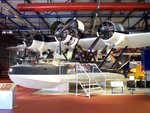Thorlifter
Captain
The only rule is you MUST pick one of these aircraft to add to your arsenal. We will pretend the year is January of 1940 so there is still some time for development and refinement.
The Consolidated PBY Catalina or the Dornier Do 24
P.S. I bet I know which one Adler will pick!
Darn it. I messed it up. Can an admin add the two planes to a poll please?
The Consolidated PBY Catalina or the Dornier Do 24
P.S. I bet I know which one Adler will pick!
Darn it. I messed it up. Can an admin add the two planes to a poll please?
Last edited:

